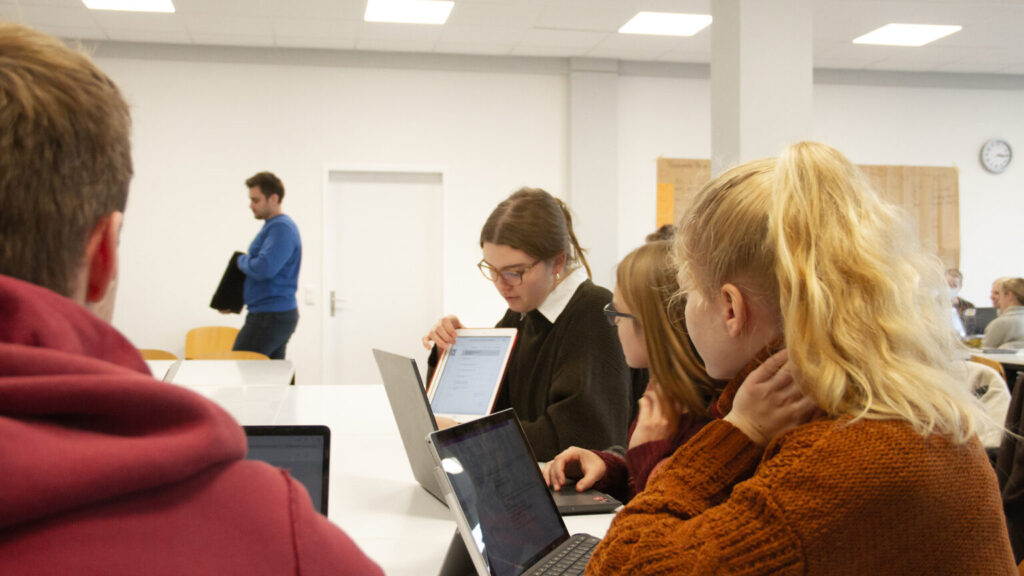Worksheet design and implementation
A field report on the workshop held by Melanie Borchers on 23.11.2022
Melanie Borchers, full-time head of English studies at the IQSH and teacher at the Klaus Groth School in Tornesch, was back! She had already given a practical workshop on the use of explanatory videos in lessons in the spring. This time, the focus was on the creation and use of worksheets. The four-hour, practice-oriented workshop was a complete success. Around 30 participants took part on site and a further 12 online, and received answers to questions that are often neglected in the theoretical university routine. What criteria do I need to consider when creating a worksheet? And what should I bear in mind when using worksheets in the classroom?

Course of the event
The criteria for coherent worksheets were actively developed by all participants in group work, more precisely by means of an expert puzzle. The first step was to formulate no-goes based on negative examples, which were discussed first in expert groups and then in mixed groups in line with the method. These criteria were then to be summarized in superordinate categories. As there were no contributions to the discussion, Melanie Borchers wanted to know what to do if no one spoke up in the classroom. Shortly afterwards, she then initiated a mumbling phase. The participants were then asked to convert the collected no-gos into positive criteria for the four categories of language, didactics, layout and content, which should be taken into account when creating worksheets. This method is called headstand and is also suitable for everyday teaching, as it is much easier to formulate negative criteria than positive ones, according to Melanie Borcher’s practical tip.
Creation of worksheets
Once the issue of creating worksheets had been clarified, Melanie Borchers gave some tips on what to consider when using them in the classroom. Among other things, before starting to create a worksheet, one should ask oneself whether another medium might be more suitable. According to Melanie Borchers, alternatives to the classic worksheet are worksheets created by pupils themselves. By creating a worksheet, the pupils would engage intensively with the material. Pupils also usually have a lot of fun creating vocabulary tests, cloze tests or even online quizzes for each other. The latter is very easy thanks to numerous apps with multimedia learning modules such as LearningApps.
We would like to thank Melanie Borchers for an exciting workshop that not only showed us participants what needs to be considered when creating and using worksheets, but also gave us helpful tips for using the methods in everyday lessons!
Back to the overview of project events

